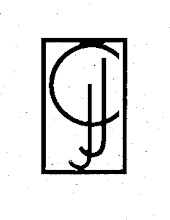
esterday, as my husband pointed out late last night, was 3.2.10. For me, the word
blast-off naturally follows this numeric sequence, which sounded like the perfect beginning for an uplifting post on
Lull. Yet nothing in my life right now has taken off or is ready for take-off—except, perhaps, the wisdom teeth that have been pressuring me this week for a new view (which I can’t wait to give them, if I have to do it myself with a doorknob and piece of string).
But the more I reflected on yesterday’s events, the more I realized how radical they were for me. 3.2.10, indeed.
Yesterday I went to court with one community and joined a different one in the evening to hear a Webinar. If you know me, then you know how unusual it is for me to become part of a group. And these two groups were worlds apart—generations apart, even—but both offered a cohesiveness that is especially foreign to many of us caught in the economy’s net of joblessness. It felt good.
And it felt bad.

Let me explain: I was in court again as a witness to a verbal assault on my neighbor, but also because the one network I’ve been a fringe member of for the past 11 years has come under attack by someone within the network.
My neighborhood isn’t tony. Realtors call it “up-and-coming,” but dollar stores are our shopping options and we need look no further than the nearest street corner for our drug supplies. Waves of immigrants, their nationality dependent on the current tribal turmoil, get their American start here. The diversity is wondrous but can be isolating. Which is why being a “dog person” is an icebreaker and a bridge to neighbors. Without the pooch, I’m not sure I could see all the beauty of the ’hood; without the pooch, I probably wouldn’t walk down every street and alley, wouldn’t stroll along the lakefront at night, wouldn’t fall into conversations with other dog people about politics, art, life, recommendations for doctors, groomers, restaurants. Dog people are the web that holds my neighborhood together and makes me feel safe here.
Until
he showed up.
He’s a dog person, too, with a sweet, adorable, golden mutt who’s well behaved. But
he isn’t. He has an alarming habit of verbally attacking people and wishing harm upon them: “I hope you get AIDS,” “I hope you get raped,” “I’m going to kill you,” “I’m going to kill your dog.” This last threat, of course, spurs dog folks to action.
Some d

og people, like my neighbor, have been on the receiving end of these tirades multiple times; some only once. I’ve merely witnessed one episode and heard about many others. But it’s enough to rend the fabric of the community.
Now, in addition to the usual suspects, we’re scanning the horizon for the one dog person who might hurt us. Since there is no apparent trigger for his outbursts, there’s no preventive action we can take other than to avoid him. My neighbor has been granted an order of protection from him but is continuing to press charges against him. And several of the dog people are standing behind her—including me (one upside to unemployment is the freedom to go to court as often as needed).
Yet being part of

a community that’s in the right isn’t necessarily enough to feel good about it. It was painfully obvious in court yesterday that Mr. Tirade has no one in his corner. He
should be part of our community but he’s not; I doubt he has any community. And I believe his tirades are the result of a neurological or psychological condition that is not being treated. I don’t want to see him punished. I want to see him become the person other dog people can embrace. Or I want a guarantee that he’s more bark than bite.
It’s odd to feel alienation while at the same time feeling a sense of belonging

and empowerment. As soon as we belong to a group, we have drawn a line between us and others. We have defined
the other. And I think no matter how much I take pleasure in the networks I belong to, no matter how grateful I am for them, I will always feel a little uncomfortable for having exposed
the other.
[Artful drop cap by illustrator Jessica Hische. Not all these dogs are in my 'hood; none is Mr. Tirade’s dog.]
 I’m starting the week with this Curious George predecessor and his long-necked pal to remind all of us that if we thrust our minds far enough into the clouds, we can rise above the gloom … see better … and think differently.
I’m starting the week with this Curious George predecessor and his long-necked pal to remind all of us that if we thrust our minds far enough into the clouds, we can rise above the gloom … see better … and think differently. 




































